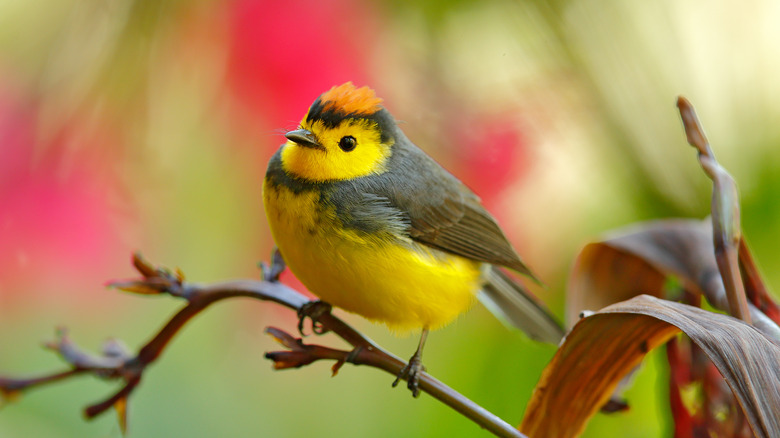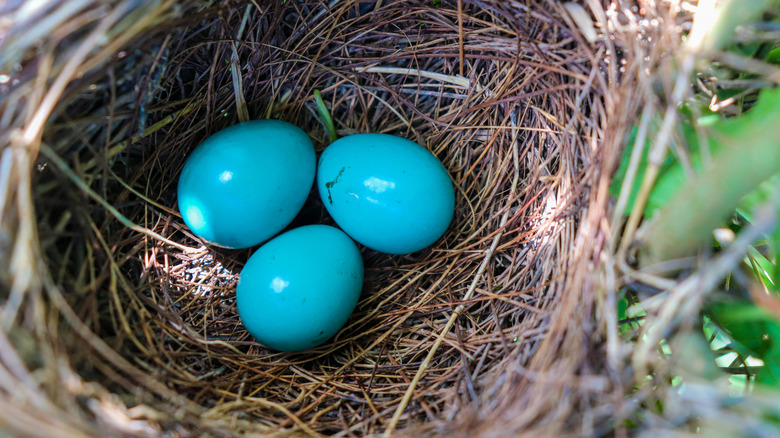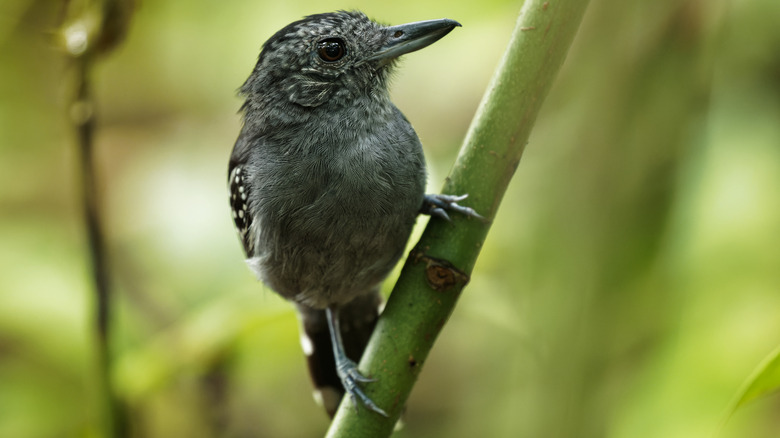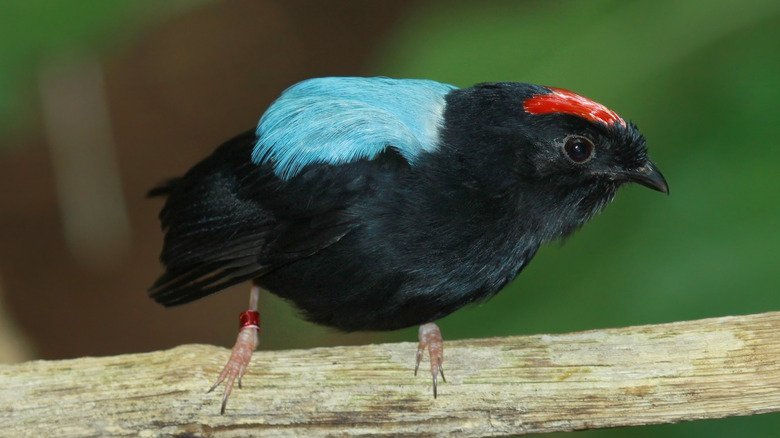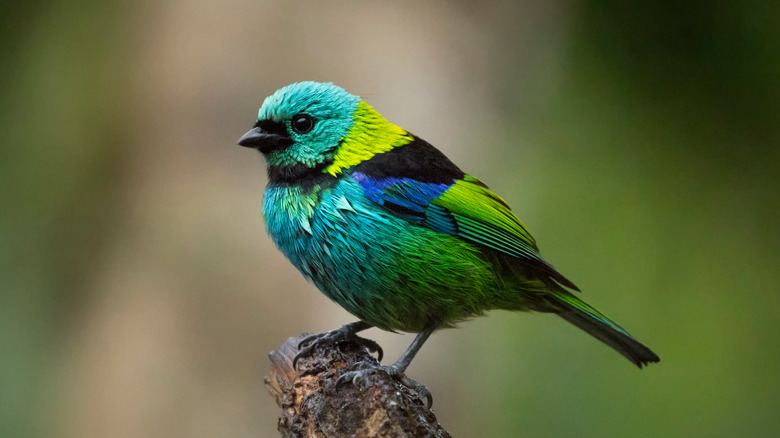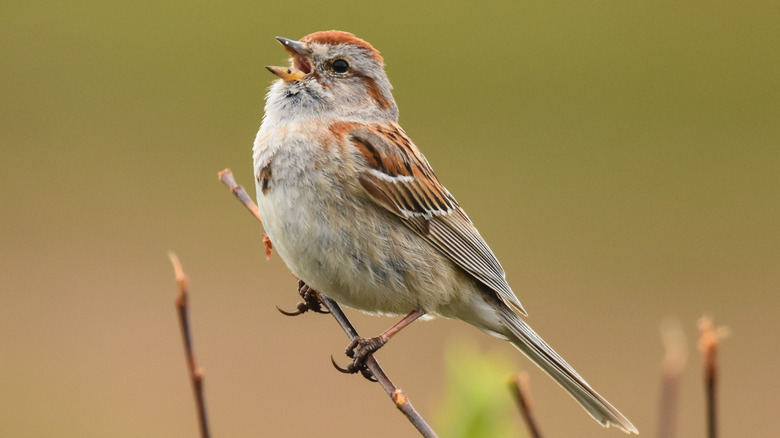Do Tropical Birds Live Longer Than Temperate Birds?
It turns out life is better in the tropics, at least if you're a bird. A 2018 study published in The Auk: Ornithological Advances found that passerine birds live longer in tropical climates than in temperate ones. Passerines are birds that belong to the scientific order Passeriformes and are defined by their perching, according to The Spruce. Passeriformes is the largest bird order and contains more than half of the world's bird species, or more than 5,000 individual species of birds. That means that all of the classic songbirds and familiar species like warblers, thrushes, tanagers, sparrows, thrashers, finches, jays, larks, nuthatches, chickadees, Orioles, and wrens are all passerines.
The study focused on passerines living in a part of the Amazon rainforest near Manaus, Brazil, according to an American Ornithological Society press release. It then compared six years of survey data on the Manaus birds with data from 11 other locations that stretched more than 60 degrees of latitude in the Americas, stretching from Peru to Alaska. The data included 175 different passerine species. "It became clear that, on average, forest passerines tend to live longer in tropical than in temperate regions," research leader Gonçalo Ferraz from the Federal University of Rio Grande do Sul in Brazil said in the press release.
What the clutch?
The question of whether tropical or temperature passerines live longer was prompted by another mystery. Tropical birds, as a rule, have smaller clutch sizes, or lay fewer eggs at once, than ones from colder regions, as The Wildlife Society explained. This is the case both in the eastern, western, northern and southern hemispheres. It has also been well documented for more than 50 years, according to the American Ornithological Society press release. "It's not even controversial," Gonçalo Ferraz told The Wildlife Society. "What has been controversial is, how does it stay like this and how are populations maintained?"
One possibility was that tropical bird populations took longer to grow, according to the press release. However, there was no evidence that this was the case. Therefore, scientists hypothesized that there was a difference in the life history of tropical and temperate birds. The most likely answer was that adult tropical birds were more likely to survive — and therefore had longer lifespans — than temperate ones.
Doubting the dogma
The idea that tropical birds live longer makes sense because the pace of life is slower in warmer climates, according to the study published in The Auk: Ornithological Advances. For example, birds in the tropics have slower metabolisms. Up until now, however, there was no conclusive evidence for this widely-held idea. A 1990 study published in The American Naturalist claimed to be the first to consider the question using an in-depth comparison between temperate and tropical birds based on comprehensive databases and capture and recapture models. "We find no support for the conventional wisdom," the study authors wrote in their abstract. However, they acknowledged the influence of the idea by subtitling their paper, "Will the dogma survive?"
If tropical birds weren't living longer overall, then what could explain their smaller clutch sizes? Another hypothesis was that young tropical birds had higher survival rates than young temperate birds, even though their overall lifespans were the same. A 2011 study published in Ecology found that the Western Slaty-Antshrike (Thamnophilus atrinucha) in central Panama survived its first year at a rate of 48 percent. That was a higher juvenile survival rate than seven species of North American birds, according to The Auk: Ornithological Advances. However, studies like this one faced a problem. They only had data from a small amount of species to work from.
The dogma survived
The 2018 study led by Gonçalo Ferraz sought to shed more light on the issue by looking at a wider variety of species, according to The Auk: Ornithological Advances. The researchers wanted to do two things. First, determine the impact that age had on the survival rates of a specific tropical bird community, i.e., find out if young or adult birds were more likely to survive. Second, compare this to both tropical and temperature survival rates documented by other studies in order to see if tropical birds really lived longer overall.
To answer the first question, researchers looked at 40 species of passerines in the Amazon rainforest, according to the Ferraz Population Biology Laboratory. They found that the young birds across the board actually had lower survival rates than the adult birds. Next, they compared the Amazon survival rates to 342 different survival rates for 175 species that live between Peru and Alaska. The results showed that adult survival really did go down as latitude increased. As the title of the Ferrz Population Biology Laboratory article put it, "The Dogma Survived."
The importance of molting
The study was partly able to reach its conclusion because of advances in determining the ages of tropical birds, according to the Ferraz Population Biology Laboratory. Tropical birds are difficult to age because they don't have the same regular breeding seasons as temperate birds, according to the American Ornithological Society press release. Temperate birds tend to have their babies all at once, so there are a lot of juvenile birds hopping around at once. Tropical birds, on the other hand, can breed at any time of year, so any bird you encounter could be at any point in its lifecycle.
Luckily, the scientists had access to the increasingly popular Wolfe-Ryder-Pyle molt-cycle system, according to the Ferraz Population Biology Laboratory. This system ages birds based on molt cycles and can be used to tell based on plumage if a bird is in its first year or older, the press release explained.
"Aging tropical birds in the field is an exercise on reading plumage molts," study first author and Colombia biologist Alejandra Muñoz said in the press release. For the birds whose age still couldn't be determined, the study authors looked at the birds they did have age information for to develop a statistical model of how many of each age group were likely to survive.
Further questions
While the study authors are confident that tropical birds really do live longer than temperate birds, there are still more questions to be answered. "To what extent the variation in survival is sufficient to sustain the variation in clutch size and how the variation in survival evolved should be questions for future study," the study authors concluded in The Auk: Ornithological Advances. As the Ferraz Population Biology Laboratory noted, there could be other factors influencing clutch size such as how long breeding seasons last in different latitudes. Or, Gonçalo Ferraz told The Wildlife Society, tropical birds might lay more clutches throughout the year since they don't have to work around cold winters. The other question is how the difference in survival rates evolved.
The Ferraz Population Biology Laboratory recommended learning more about the life history of tropical passerines. For example, why do they have lower metabolisms despite living in warmer climates?. Do they run colder than tropical birds? Discovering more could also help protect birds. "Any knowledge of population dynamics could have potential use for conservation," Ferraz told The Wildlife Society.
